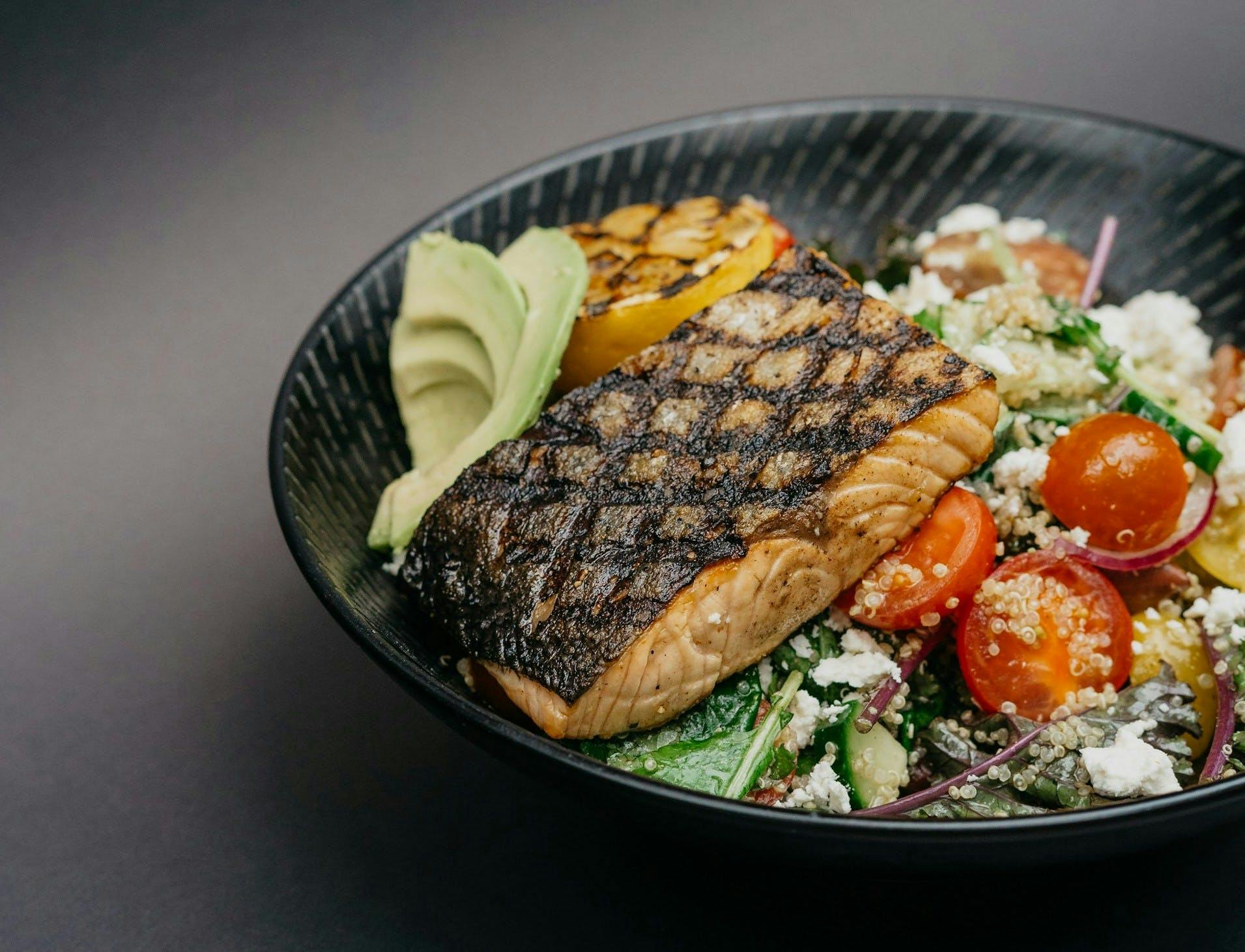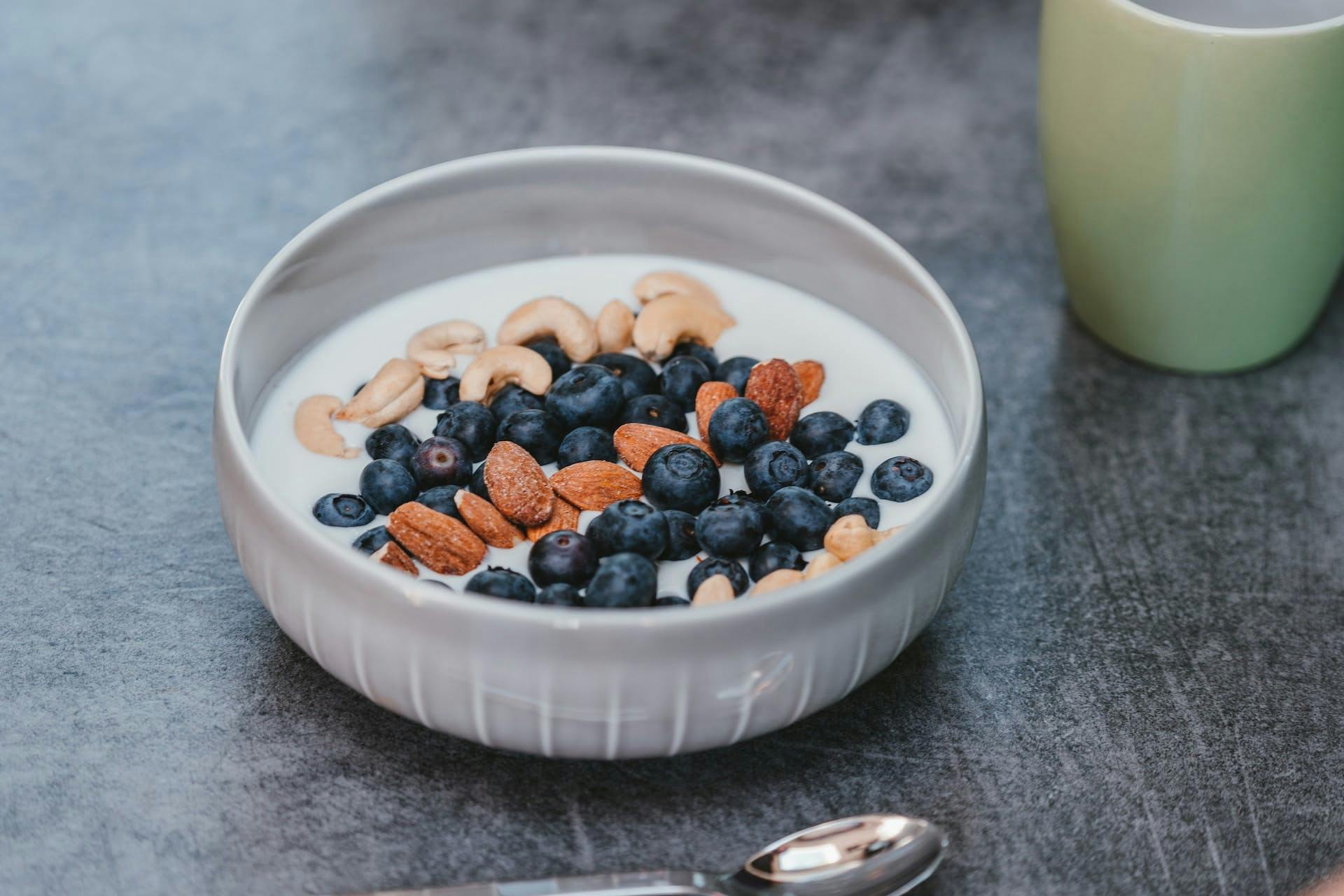What if you could take charge of your metabolic control center, influencing the release of hormones and signaling molecules that govern your energy levels, mental clarity, and weight management? By carefully crafting your plate, making subtle adjustments, and optimizing macronutrient combinations and portions, you hold the key to reclaiming control over your metabolic health. This proactive approach empowers you to send precise signals to your body, reducing disease risk and promoting overall well-being.
How to balance carbs and proteins for stable glucose levels
When creating a metabolically healthy plate, it's important to consider both macronutrient composition (such as protein, carbohydrates, and fats) and micronutrient density.
Protein plays a crucial role in metabolic health by minimizing glucose spikes when paired with carbohydrates (e.g., almond butter with apple slices). It aids in building muscle mass, improving insulin sensitivity, and stabilizing glucose levels.
At the same time, reducing refined carbohydrate intake is vital for maintaining stable glucose levels and avoiding fluctuations that can lead to appetite swings, energy dips, weight gain, and cardiometabolic diseases [1, 2].
Micronutrient density is another key factor to consider, as the nutrient content of foods diminishes with increased processing. Foods that closely resemble their whole food source tend to be more micronutrient-dense. For instance, roasted sweet potato chunks offer more nutrients compared to sweet potato fries or crisps made with processed flour and seed oils.
Furthermore, carbohydrate-rich vegetables like sweet potatoes and squash, along with grains such as rice, quinoa, and buckwheat, when consumed in their minimally processed, whole-food form, contain higher fiber content. This fiber provides various health benefits beyond blood sugar control, including improved gut health and more effective appetite regulation.
Navigating these considerations can be challenging. To simplify the process, we've done the hard work for you and curated six recipes designed to stabilize blood sugar levels and nourish your body.
1. Pumpkin vanilla chia pudding recipe
This delicious dish is ideal for a satiating breakfast or a healthy dessert. With the addition of protein powder and pumpkin fiber, it won’t cause your blood sugar to soar, while the inclusion of spices like cinnamon, nutmeg, and clove offers cardiometabolic benefits and a delicious taste [3]. Plus, the chia seeds provide beneficial omega-3 fatty acids and antioxidants. The maple syrup is optional as a sweetener; for added metabolic health benefits, consider swapping it for banana or dried fruit.
Find the recipe on our website.
2. Peanut butter and egg “bread”
While it might sound unusual, this two-ingredient high-protein bread roll recipe offers a fluffy texture and a rich, nutty flavor. Loaded with healthy fats and plenty of protein, these rolls are ideal for snacking or packing in a lunch. Experiment with adding seeds and herbs for additional fiber and diversity to support a healthy gut microbiome.
Check out the recipe on the Veri Instagram page.
3. Salmon en papillote
En papillote is a cooking technique that combines baking and steaming by enveloping food in a folded pouch or parcel before baking. This method is often considered healthier for cooking fish or vegetables, as it helps retain more vitamins and nutrients compared to frying. In this dish, fiber-rich zucchini helps stabilize glucose levels, while the salmon provides lean protein and omega-3 fatty acids. Furthermore, extra virgin olive oil contains phenols and compounds that combat inflammation, a factor associated with insulin resistance.
You can access the recipe on our website, or for a video demo, visit our Instagram page.
4. Kung pao chicken
This one-pan dish is both indulgent and nutritious. It features colorful peppers for blood-sugar-stabilizing fiber, garlic for immune boosting, and ample protein from chicken and peanuts. It's a simple yet satisfying meal that supports stable glucose levels.
You can find the recipe on the Veri Instagram.
5. Baked chicken shawarma
This baked chicken shawarma recipe is bursting with flavorful health-boosting spices like turmeric, black pepper, paprika, cinnamon, and cumin. With the main components being high-protein chicken and fiber-rich nutritious vegetables, this meal will keep you feeling full and energized for an extended period, while reducing the likelihood of blood sugar spikes and crashes associated with refined carbohydrate-based dishes like pasta or pizza. Better yet, with only one pan needed for cooking, it’s easy to prep and clean. Finish it off with parsley, cucumber, and tomatoes for an extra dose of micronutrient goodness.
Head over to our Instagram page for a detailed, step-by-step demonstration of how to recreate this dish.
6. Sirloin stir-fry with vegetables
This nutrient-rich sirloin stir-fry, featuring bell peppers, bok choy, and zucchini served on quinoa, offers the perfect dinner choice for maintaining stable blood sugar levels. Incorporating a variety of colorful vegetables not only adds flavor but also provides essential vitamins, minerals, and dietary fiber.
Consider including additional vegetables such as broccoli, cauliflower, or mushrooms for added nutritional value, fiber, and satiation. Sprinkling sesame seeds on top adds texture and healthy fats. For an extra protein boost, consider adding an egg. You can also incorporate cilantro into the dish for potential liver-supporting benefits.
Visit our Instagram page to find the complete recipe, step-by-step tutorial, and further insights into the health benefits.
Key takeaways
- Cooking doesn't need to feel like a task; it can be an enjoyable and empowering journey toward optimizing your physiology, metabolic health, and longevity.
- Mastering the balance between carbohydrates and proteins on your plate can enhance blood sugar stabilization, ultimately lowering the risk of cardiometabolic diseases. The benefits? Increased energy, improved mental clarity, and better weight management!
- Make sure to include a serving of high-quality protein in every meal, and add healthy fats whenever possible.
- Pair these nutrient-dense, fiber-rich, high-protein, and healthy-fat meals with minimally processed carbohydrate sources to maintain steady and balanced blood sugar levels.
- When selecting carbohydrates, opt for minimally processed options that closely resemble their original whole-food form or have a shorter ingredient list, to ensure you’re meeting your body’s micronutrient needs.


